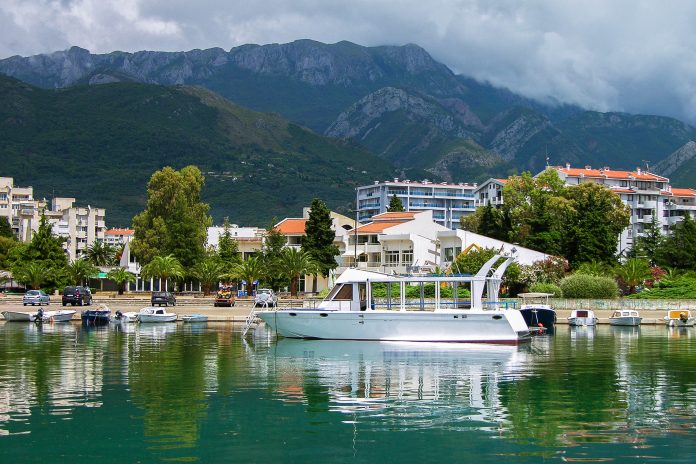Die Stadt Bar im Süden Montenegros ist heute zweigeteilt. An der Küste liegt Novi Bar mit dem riesigen Hafen, am Fuß des Küstengebirges findet sich Stari Bar. Heute nicht mehr viel mehr als eine Ruinenstadt zählt sie dennoch zu den kulturhistorisch wertvollsten Stätten Montenegros.
Die Stadt Bar an der Adriaküste Montenegros war seit jeher das Seefahrer-Zentrum des Landes. Auf den ersten Blick wird Bar mit seinem großen Frachthafen und den Tanklagern ganz und gar nicht touristisch.
Inhaltsverzeichnis
BILDER: Die Stadt Bar
Wie kommt man am besten nach Bar?
Von der maritimen Tradition ist Bar noch der Fähr- und Verladebetrieb geblieben. Der Wasserweg nach Bari und Ancona in Italien wird noch heute genutzt. Täglich bzw. zweiwöchentlich fahren Fähren nach Bar.
Bar ist außerdem die Endstation der spektakulären Eisenbahnverbindung über Podgorica nach Belgrad, die 1974 nach 24 Jahren Bauzeit eröffnet wurde und sich mit Hilfe unzähliger Brücken und Tunnel durch die Bergwelt Montenegros windet. Von Bar führt die Eisenbahn nach Virpazar am Skadar-See, 1908 war dies die erste Bahnlinie Montenegros.
Hafen von Bar
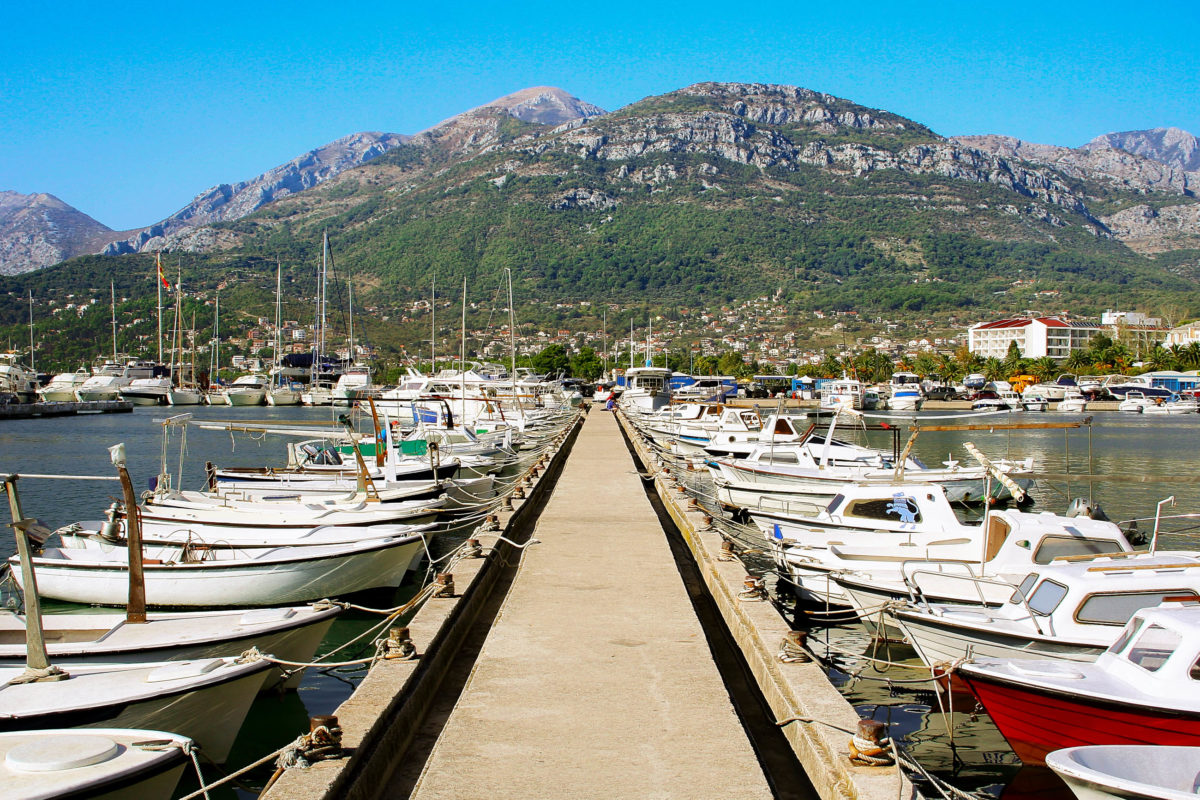
Die knapp 40.000 Einwohner von Bar machen die Stadt zum Zentrum der mittleren Küstenregion und zur größten Küstenstadt Montenegros. Trotzdem, oder gerade deswegen, verströmt Bar eher den strengen Geruch von Arbeit als den süßen Duft von Urlaub. Dennoch ist der eindrucksvolle Tiefseehafen mit seinen riesigen Frachtern, den imposanten Yachten und den kleinen bunten Fischerbooten einen Spaziergang wert.
Strände von Bar
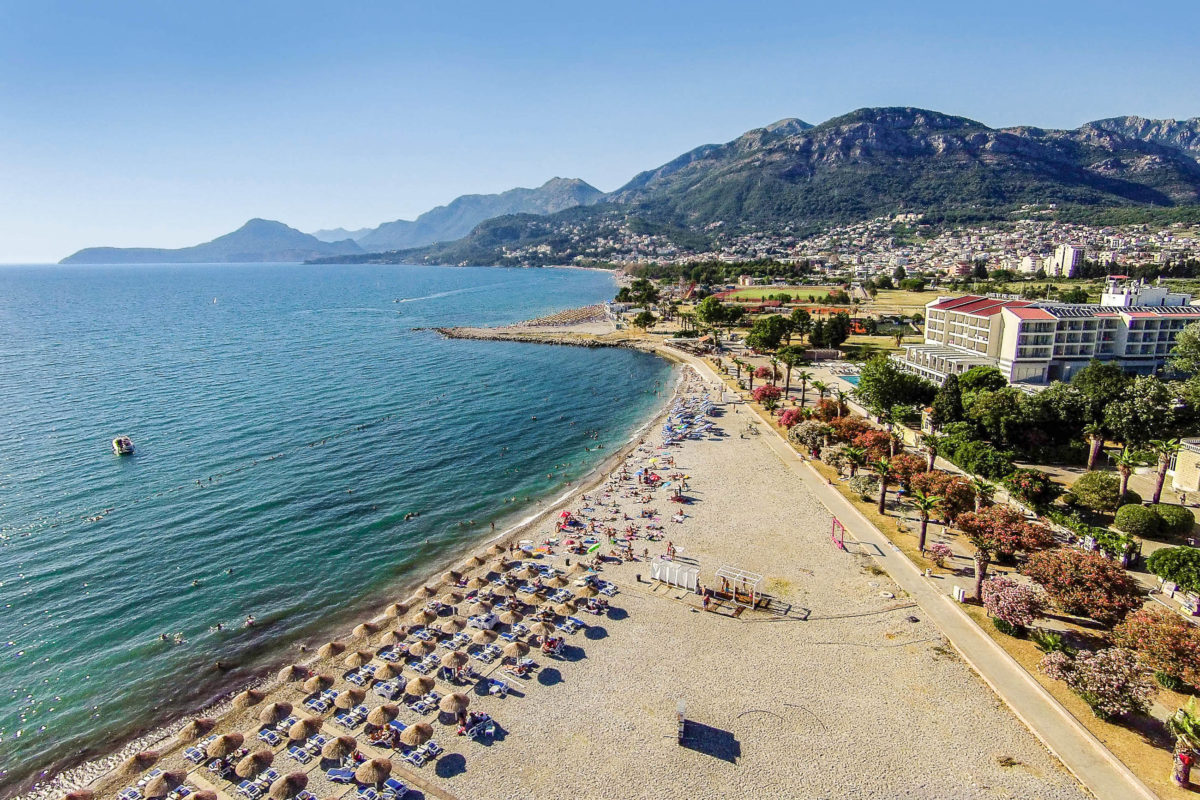
Für eine Hafenstadt ist Bar erstaunlich sauber und die vielen Grünflächen schaffen gemeinsam mit der Brise vom Meer eine angenehme Atmosphäre. Der Strand bei Šušanj, lädt sogar zum Baden ein. Weitere Strände in der Umgebung liegen in den Nachbarorten Sutomore und Canj, hier kann es allerdings vor allem an den Wochenenden sehr voll werden.
Stari Bar
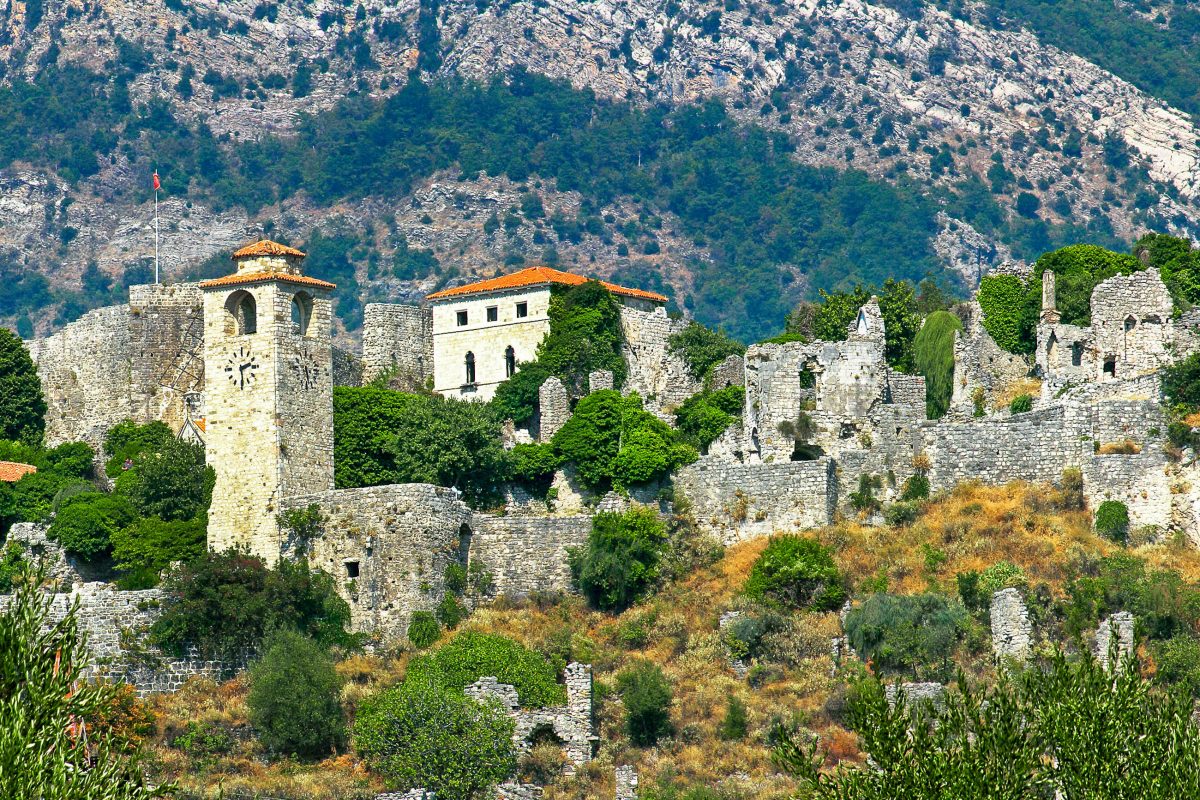
Das „alte Bar“ wurde bereits vor über 2.000 Jahren gegründet, hatte zu Spitzenzeiten 4.000 Einwohner und prachtvolle Bauten der verschiedensten Herrscher. Heute ist Stari Bar verlassen und von den Gebäuden nur noch Ruinen übrig, doch einige von ihnen wurden restauriert und können besichtigt werden. Sie stellen heute stumme Zeugen der einzelnen Herrschaftsepochen in einer turbulenten Geschichte dar. Gegen eine geringe Gebühr kann man das historische Viertel Bars erkunden.
Wie kommt man nach Stari Bar?
Stari Bar liegt im Süden von Montenegro einige Kilometer von Novi Bar entfernt am Fuß des Küstengebirges Rumija. Um das alte, charmante Bar zu finden, muss man sich durch Wohnblöcke und Industriebauten etwa vier Kilometer weit ins Landesinnere wagen.
Hat man das uralte Stari Bar („Alt-Bar“) am Fuß der Rumija-Berge erreicht, steht man vor einer pittoresken Ruinenstadt, die zu den kulturhistorisch wertvollsten Stätten Montenegros zählt.
Sehenswürdigkeiten in Stari Bar
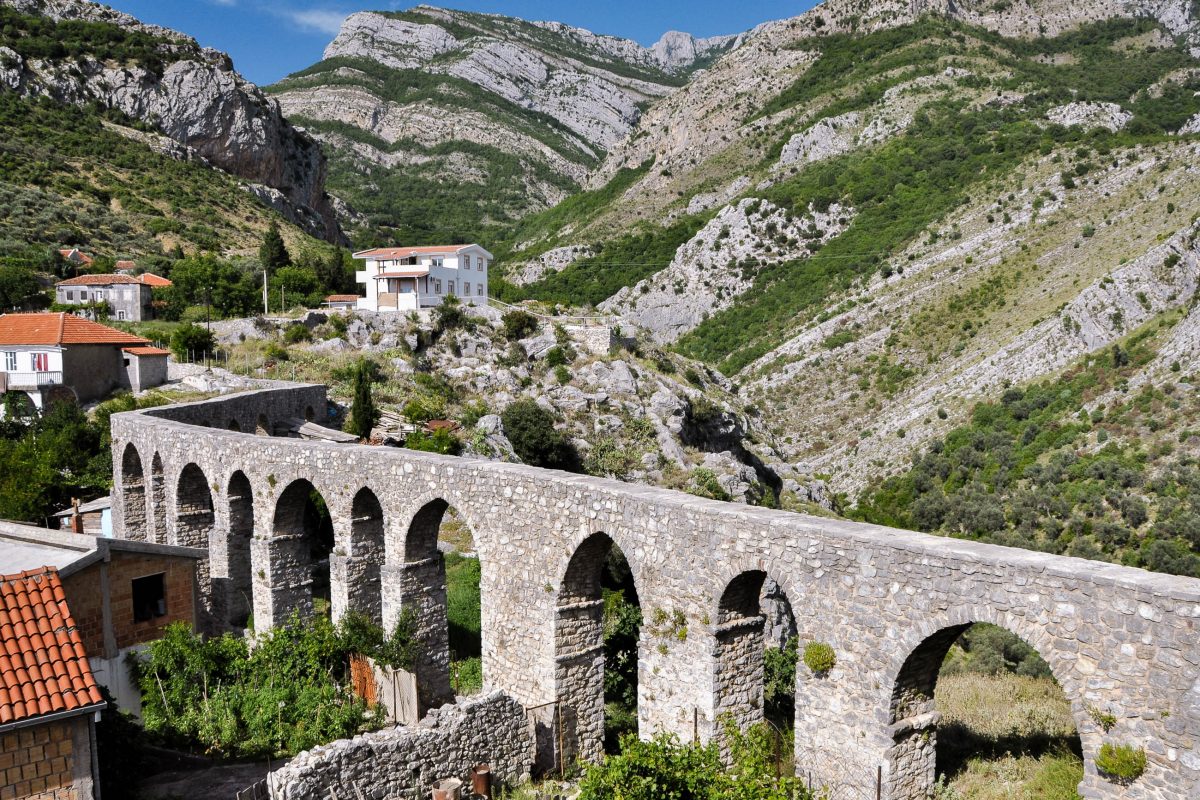
Durch das Haupttor in den Stadtmauern, die noch auf die venezianische Zeit zurück gehen, gelangt man direkt zum Zollhaus, in dem eine kleine Ausstellung zu sehen ist. Nach rechts geht es zum Bischofspalast, nach links über den türkischen Pulverturm zur Zitadelle im Norden, die noch im Zweiten Weltkrieg der faschistischen Besatzung als Gefängnis diente. Von dort aus hat man übrigens den schönsten Rundblick über Stari Bar.
Wendet man den Blick auf die andere Seite von Stari Bar, hat man das imposante Aquädukt vor Augen, das Bar seit dem 18. Jahrhundert mit Trinkwasser versorgte. Nicht einmal das verheerende Erdbeben von 1979 konnte dem filigran wirkenden Bau der türkischen Baumeister etwas anhaben, was die Ingenieure von heute noch in Staunen versetzt.
Weiter geht es über die Kirche Sveti Veneranda aus dem 14. Jahrhundert, die Johanneskirche (Sveti Ivan) aus dem 15. Jahrhundert und das Türkische Bad, das damals mit Wasserdampf erhitzt wurde, zum prominenten Uhrenturm im Süden.
Geschichte von Stari Bar
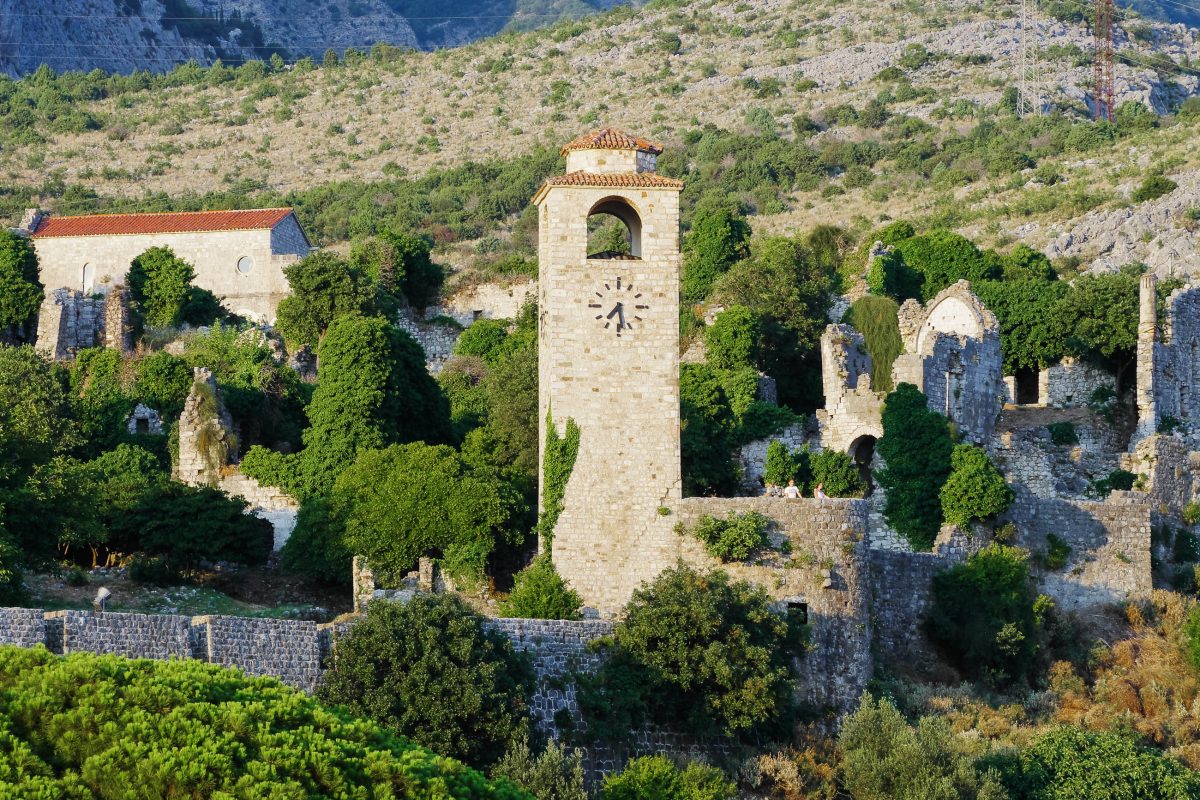
Das „alte Bar“ ist aufgrund seiner strategisch ausgezeichneten Lage schon weit über 2.000 Jahre besiedelt, einige Fund gehen auf das 8. Jahrhundert vor Christus zurück. Die erste urkundliche Erwähnung erfolgte im 9. Jahrhundert unter dem Namen „Antibarium“, was wohl so viel wie „gegenüber von Bari“ (in Italien) heißen sollte.
Nach den Römern kamen die Byzantiner, die noch heute sichtbaren Festungsanlagen stammen aus der venezianischen Zeit von 1443 bis 1571. Danach kam Bar unter türkische Herrschaft und wurde im Zuge des Unabhängigkeitskrieges 1878 zerstört. Als dann genau 101 Jahre später auch noch ein schweres Erdbeben die Stadt erschütterte, wurde Bar endgültig aufgegeben und Novi Bar errichtet. Von den 30 Renaissance-Palästen und den 16 Kirchen und Klöstern blieben leider nur Ruinen zurück.
Ganz in der Nähe von Stari Bar findet man auch das muslimische Viertel von Bar – die ersten Minarette und Muezzin-Gesänge auf dem Weg von Europa nach Süden.
Ölbaum von Mirovica in Bar

Der Ölbaum im Stadtteil Mirovica ist auf den ersten Blick nur einer von vielen unter den knorrigen Stämmen rund um Bar. Doch das Exemplar zählt mit einem Alter von 2.300 Jahren zu den absolut ältesten Ölbäumen der Region und ist vielleicht sogar der älteste Baum Europas – älter als das Christentum – und trägt angeblich immer noch Früchte! Zu erreichen ist er von der Straße in den Bade-Ort Ulcinj aus, da ist er unter der Bezeichnung „stara maslina“ ausgeschildert. Gegen eine geringe Gebühr kann der Baumgreis besichtigt werden.
Die Olivenbäume gelten als Symbol von Bar und ihr hochqualitatives Öl wird zu teilweise exorbitanten Preisen angeboten. Olivenöl aus Bar findet man in ganz Montenegro und ist trotz seines höheren Preises aufgrund des exzellenten Geschmacks und der umweltfreundlichen Produktion äußerst beliebt.
Fort Haj Nehaj
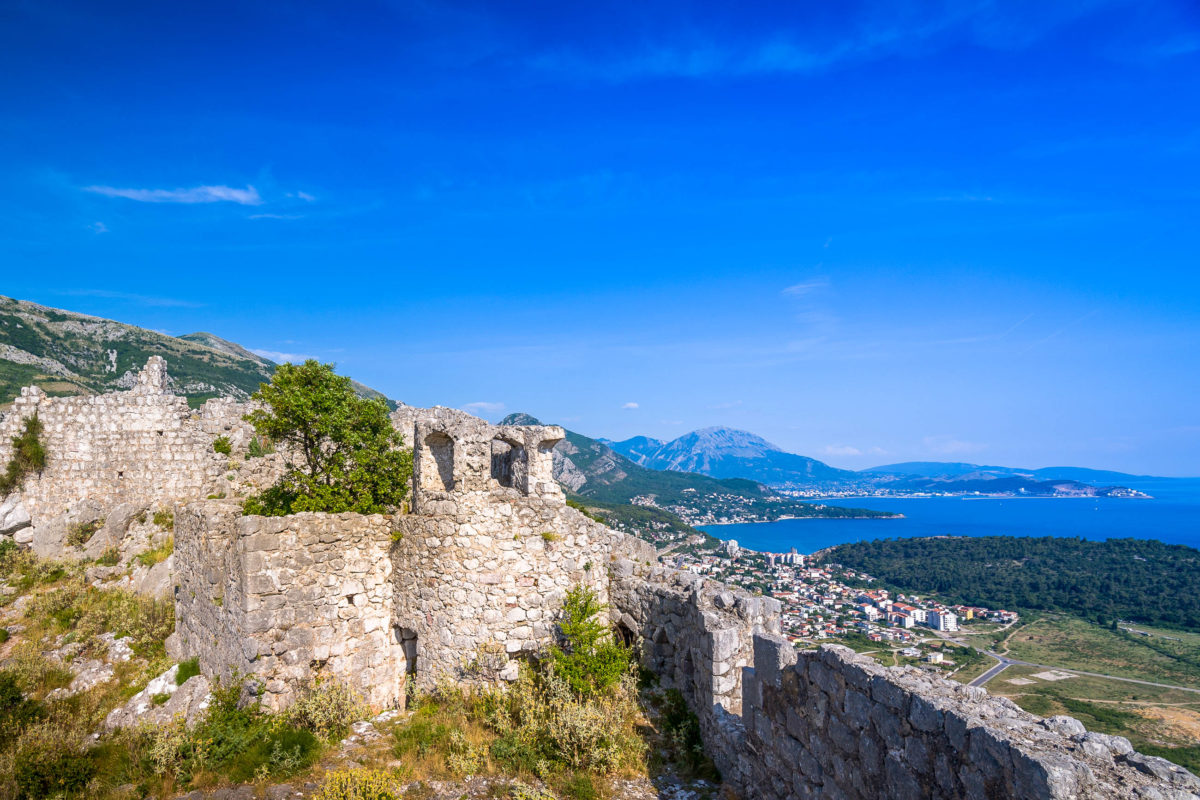
Die türkische Festung Haj Nehaj thront etwa 10km nördlich von Bar zwischen Sutomore und Cenj auf einem Felshügel. Ursprünglich von den Venezianern gegründet wurde sie erstmals 1542 schriftlich erwähnt.
Der Weg nach oben ist mühsam und zahlt sich auf den ersten Blick für die niedrigen Mauerrest auf dem felsigen Boden nicht wirklich aus. Deshalb sollte man einen Besuch auf den späten Nachmittag legen, wenn die Umgebung im warmen Licht der sinkenden Sonne erstrahlt und der Ausblick für jede Strapaze entschädigt.
Königspalast
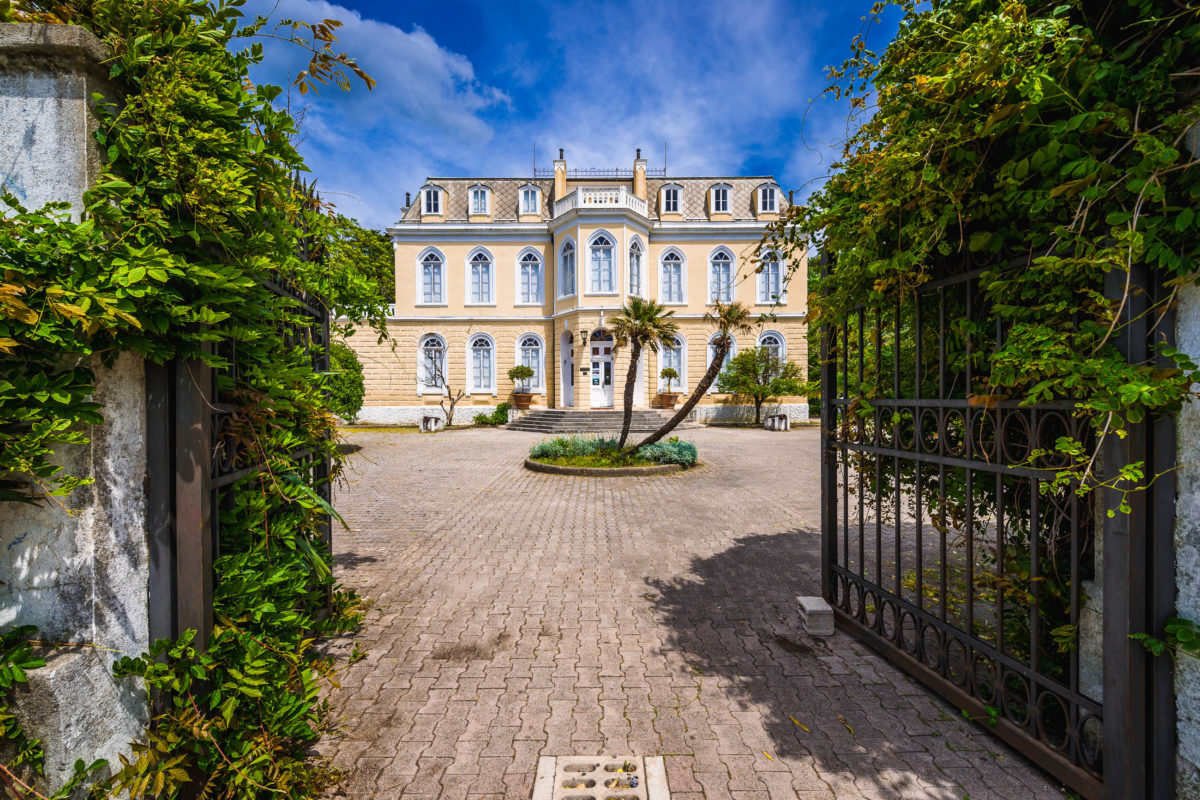
Der ehemalige Sitz von König Nikola thront heute noch an der Hafenpromenade. Das schöne, sonnengelbe Gebäude wurde im Jahr 1885 direkt am Meer errichtet. Erstens war König Nikola ein begeisterter Segler und zweitens konnte er so bequem die Staatsgäste willkommen heißen, die über den Seeweg anreisten.
Heute beherbergt der Palast ein kleines Heimatmuseum mit Antiquitäten, historischer Kleidung und königlichem Mobiliar, welches unter anderem den Bau der Eisenbahnlinie zwischen Bar und Virpazar am Skadar-See erzählt, die vor über 100 Jahren in Betrieb genommen wurde. Auch der Garten der Königsresidenz ist einen Blick wert. In ihm gedeihen Pflanzen, die Montenegros Seefahrer von überall auf der Welt ins Land gebracht haben.

